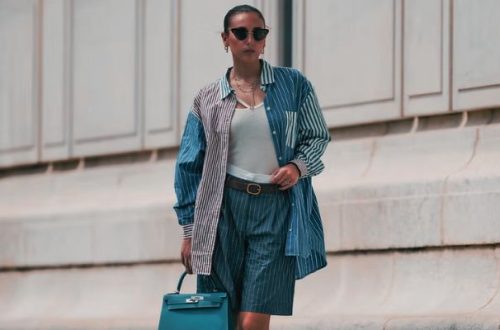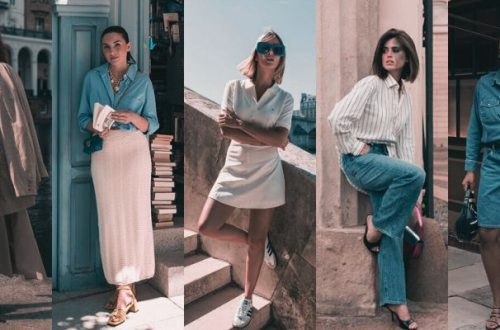Introduction
The fashion world has entered a new era — one defined not only by creativity and design but also by digital innovation. What was once limited to glossy magazines and runway invitations is now accessible to everyone with an internet connection. Digital fashion platforms, such as FashionWeekOnline.co.uk, have revolutionized how style is shared, consumed, and celebrated across the globe.
Today, fashion isn’t just about what happens on the catwalk — it’s about how stories, collections, and ideas are told online.
The Rise of Digital Fashion Media
Before the internet, fashion news traveled slowly. Designers relied on print media and television coverage to reach their audiences. But with the rise of online platforms, fashion went global overnight. Digital magazines, blogs, and social media turned once-exclusive events into worldwide experiences.
Websites like FashionWeekOnline.co.uk became pioneers of this change. By offering real-time updates, live coverage, and designer insights, they made fashion weeks accessible to millions of readers. What used to be a luxury for a select few has now become a shared cultural phenomenon.
From Runways to Real-Time Stories
The biggest advantage of digital fashion platforms is speed and accessibility. Within seconds, a user can view runway images, read designer interviews, and watch live shows — all from their smartphone. This instant access has made fashion more democratic and transparent.
Moreover, platforms such as FashionWeekOnline.co.uk curate content that balances high-end fashion with emerging talent. This gives new designers a chance to shine and helps audiences discover creative voices beyond traditional fashion capitals.
Social Media’s Impact on Fashion Trends
Social media has become fashion’s most powerful stage. Influencers, stylists, and even everyday users now play a major role in defining global trends. Platforms like Instagram, TikTok, and Pinterest have turned fashion into a conversation rather than a broadcast.
However, this digital explosion also means that authenticity is more important than ever. Audiences can instantly sense when content feels forced or artificial. That’s why trusted online media sources — such as FashionWeekOnline.co.uk — stand out. Their focus on credible reporting and professional coverage gives them authority in a world overflowing with quick trends and viral posts.
The Power of Virtual Runways and Technology
In the past few years, the fashion industry has adopted cutting-edge technology to enhance engagement. Virtual fashion shows, augmented reality fittings, and AI-driven design tools have become part of the creative process. These innovations allow designers to reach audiences without geographical limits — turning fashion weeks into global digital experiences.
Digital fashion platforms are at the center of this transformation. They connect designers, media, and audiences on one platform, ensuring that fashion continues to evolve while keeping its cultural essence intact.
Sustainability and Conscious Fashion
Digital platforms also play a key role in promoting sustainability. As consumers become more eco-conscious, fashion media now highlights responsible production, ethical sourcing, and the importance of rethinking fast fashion.
Websites like FashionWeekOnline.co.uk often spotlight designers committed to sustainable practices, helping to educate readers about how style and sustainability can coexist. This not only informs audiences but also encourages meaningful change within the industry.
How Digital Platforms Empower Emerging Designers
Another important aspect of online fashion media is inclusivity. New and independent designers can now showcase their collections to global audiences without needing massive budgets or connections. Through digital coverage, they gain exposure and recognition that can transform their careers.
Platforms that focus on fair representation — such as FashionWeekOnline.co.uk — provide the visibility that helps keep the fashion ecosystem diverse and forward-thinking. This inclusivity ensures that fashion continues to thrive on innovation rather than repetition.
The Future of Fashion Communication
Looking ahead, fashion communication will become even more immersive and interactive. From 3D lookbooks to virtual styling assistants, technology will continue to bridge the gap between designers and consumers. But one thing will remain constant — the need for storytelling.
No matter how advanced the technology becomes, audiences will always crave authentic voices and meaningful narratives. Digital fashion platforms that focus on real content, creativity, and credibility will continue to lead the industry forward.
Conclusion
The evolution of digital fashion platforms has changed how the world experiences style. By combining technology, storytelling, and inclusivity, they’ve made fashion more open, interactive, and inspiring than ever before.
FashionWeekOnline.co.uk exemplifies this transformation — connecting global audiences to the heart of fashion while celebrating creativity and innovation. As fashion continues to evolve, the digital landscape will remain its most dynamic runway — where trends are born, voices are heard, and style never stops moving.





